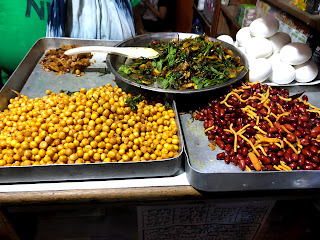A lazy quaint village Raghurajpur in Odisha, evokes our creative thirst to innumerable handmade assets. This village declared heritage village by UNESCO for its handicraft restoration. Undoubtedly Raghurajpur has a treasure of handicrafts to explore and discover. From paper machier to Patachitra, from Wood craft to wall painting, this village holds wonder to the outer world.
Tucked in a discreet corner from Bhubaneswar to Puri, Raghurajpur is eternal handicrafts identity.
Each of the village houses are ornate with beautiful wall paintings depicting mythological figurines. This village has many national master craftsmen awardee who are involved in the age old process of patachitra. The Oriya patachitra are more ornate and colorful, depicts mythical figures of Gods and Goddesses. The house walls, doors are hand painted with these patachitra paintings.
Papier mache is also one of the well known hand crafted products of this village. Each village house holds are known to be involved in this craft. They make interesting by-products like birds, puppets, toys, coasters and masks.
Taal pata patachitra is an art work wherein dried palm leaves are used as canvas to which colorful or back and white paintings are done by etching the surface and filling it with natural colors or kajal.
The villagers are also involved in making golden grass products by using many techniques.
This village is also the birth place of world renowned dancer Kelucharan Mahapatra.
Over here we can see new products take shape using traditional technique combined with very simple and naturally found materials.
Tucked in a discreet corner from Bhubaneswar to Puri, Raghurajpur is eternal handicrafts identity.
Each of the village houses are ornate with beautiful wall paintings depicting mythological figurines. This village has many national master craftsmen awardee who are involved in the age old process of patachitra. The Oriya patachitra are more ornate and colorful, depicts mythical figures of Gods and Goddesses. The house walls, doors are hand painted with these patachitra paintings.
Papier mache is also one of the well known hand crafted products of this village. Each village house holds are known to be involved in this craft. They make interesting by-products like birds, puppets, toys, coasters and masks.
Taal pata patachitra is an art work wherein dried palm leaves are used as canvas to which colorful or back and white paintings are done by etching the surface and filling it with natural colors or kajal.
The villagers are also involved in making golden grass products by using many techniques.
This village is also the birth place of world renowned dancer Kelucharan Mahapatra.
Over here we can see new products take shape using traditional technique combined with very simple and naturally found materials.













